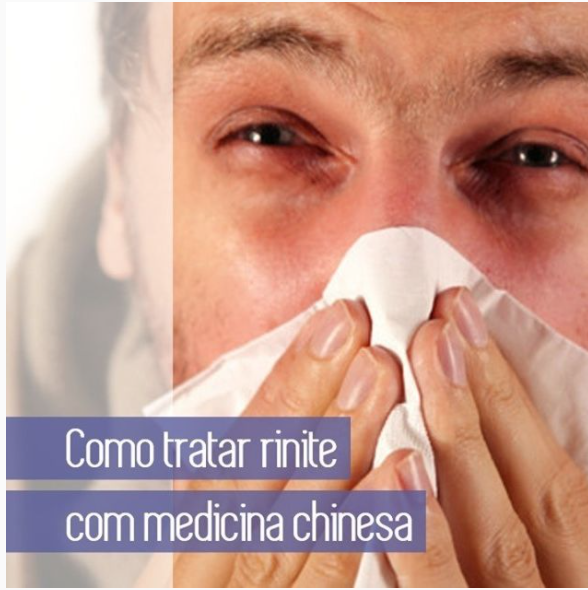Hello Readers!
Today we are going to talk a little about an allergic disease that bothers many people during the winter: rhinitis.
Rhinitis is an allergic disease where there is inflammation of the nasal mucosa causing common symptoms such as sneezing, runny nose, itchy in the nose, eyes, ears and skin redness, among others.
It is a very common disease in all ages, both in men and women, and has some factors that can cause acute phase shots, such as strong smells, dust, animal hair and the cold and dry climate, as happens in winter in Brazil (I’m sure this weather happens in other countries at some point in the year).
Rhinitis, according to Traditional Chinese Medicine, directly attacks the Lung, causing dryness of its fluids which will lead to the production of heat symptoms, such as those mentioned above. Thus, to minimize symptoms or even to avoid crises, patients with allergic rhinitis need to maintain the production of body fluids and their adequate dissemination, a function that is related to the Lung.
Therefore, the treatment will consist of 4 parts:
1. Maintain body fluid production
The organ responsible for the production of body fluids is the Stomach, not forgetting the participation of the Kidneys as well. So that the fluids are kept in adequate volume inside the body, I suggest the following points: ST-36, SP-6 and KI-6. The patient should be asked to consume the proper amount of fluid for their weight and height. Some literature advocates the consumption of 35ml of water per kilogram of weight.
In auriculotherapy, Stomach and Kidney points can be used.
2. Keep the Lung’s fluid-disseminating function balanced
The function of disseminating fluids properly gives the Lung the ability to keep all body tissues well nourished, including skin, nails and hair. When a tissue does not adequately receive fluids through the Lung, the structures dry out, with consequent itching, the urge to sneeze and other symptoms already correlated with rhinitis in this text.
To maintain the fluid dissipation function, we must use point LU-7. In auriculotherapy the Lung point.
3. Strengthen the Lung
Once the production and dissemination of bodily fluids is restored, the therapist should strengthen the patient’s Lung. For this, point Lu-9 should be used in body acupuncture and recommend that the patient eat, at least twice a day, foods considered neutral for the Metal element, such as rice, carrots, cauliflower… The full table link it can be found at the link: https://www.facilitandoacupuntura.com.br/tabelas-de-alimentacao-terapeutica/
If one of the patient’s symptoms is runny nose, milk and dairy products should be avoided even if they appear as an indication in the recommended table. Feeding should be maintained for at least 15 days or until you notice improvement in the condition.
4. Treat the symptoms
Rhinitis symptoms are well treated with local acupuncture points, such as:
- Sneezing / itchy nose / runny nose: LI- 20, extra Bitong point
- Itchy eyes: GB-14, ST-2
- Itchy ear: SI-19
- Itchy throat: ST-9
To reduce the sensation of a congested nose, the patient can inhale 2 to 3 times a day the essential oil of peppermint. It is recommended to drip a drop into the palm of the hand and, after light friction, inhale with the hands cupped for 3 to 5 full breaths.
The treatment usually generates benefits and improves the condition in the first session, but the treatment time varies from patient to patient.
Hope this helps!
A big hug to everyone!
Prof. Fernanda Mara